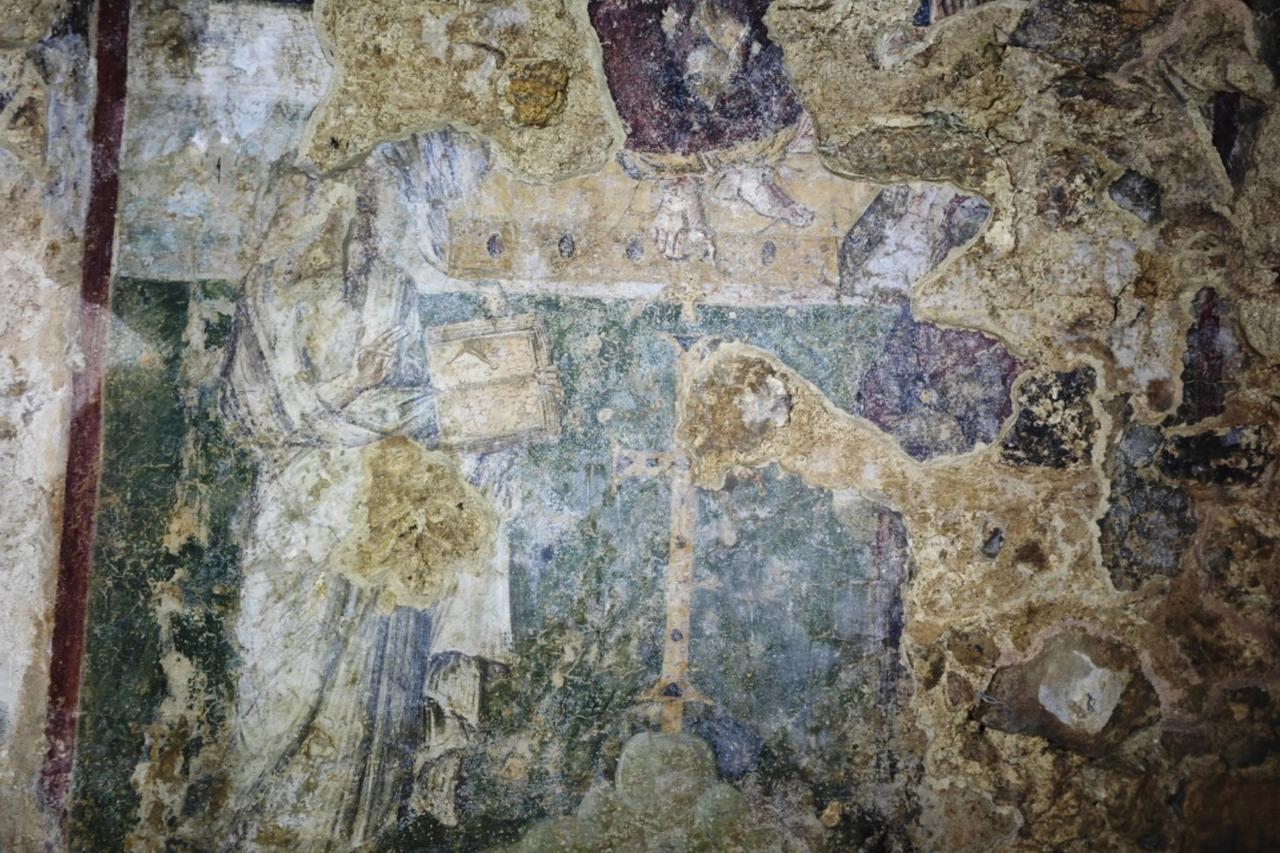
Archaeological excavations in Syedra, an ancient city in Antalya’s Alanya district, have brought to light striking frescoes inside a Christian-era cave known as the Baptism Cave. Researchers have identified depictions linked to Saint Paul and other early Christian figures.
The work is being carried out with permits from Türkiye’s Ministry of Culture and Tourism under the “Heritage for the Future Project.”
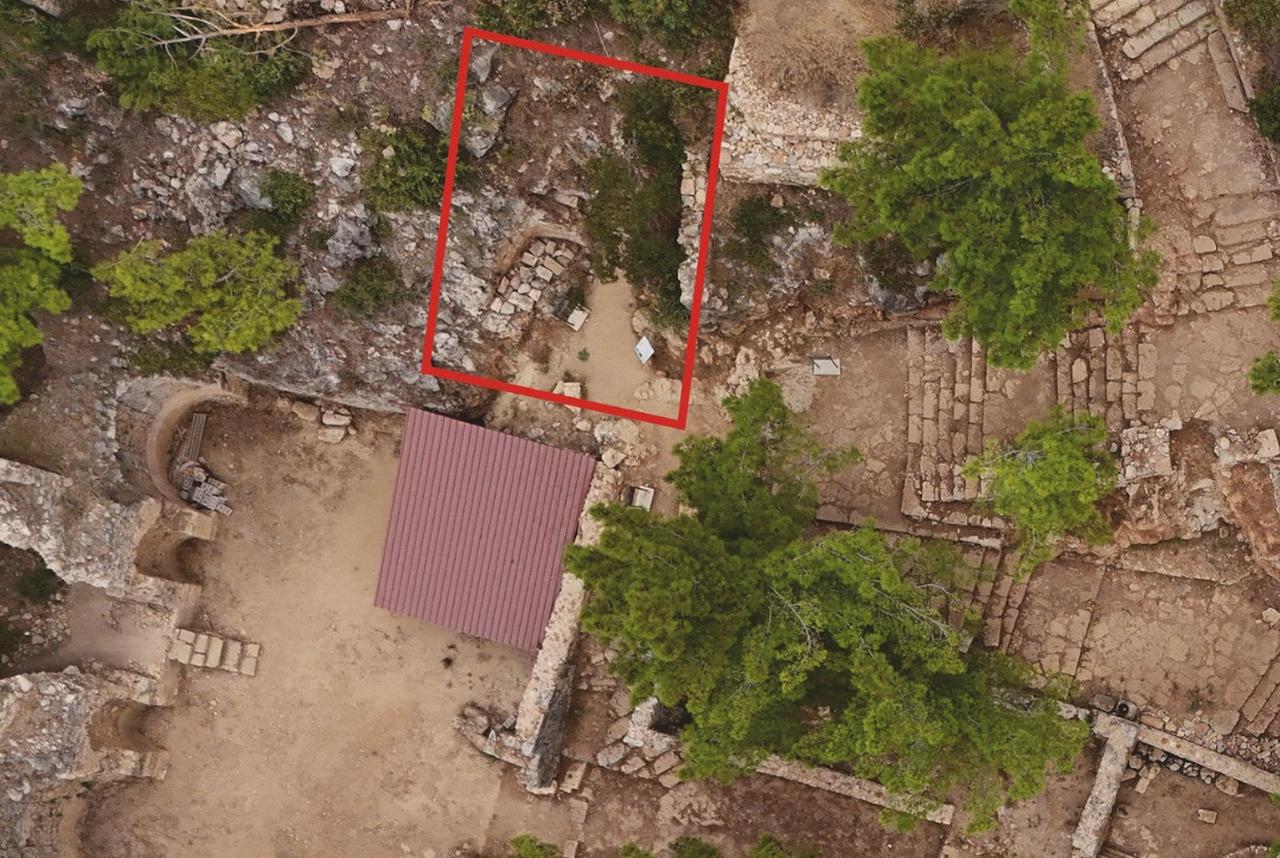
According to arkeolojihaber, Assoc. Prof. Ertug Ergurer, from Alanya Alaaddin Keykubat University and head of the Syedra excavations, explained that the cave stands out as one of the most remarkable Christian-period structures still preserved in the city.
Located east of Syedra’s western city gate, it sits at an elevation of about 350 meters above sea level. The cave stretches around 10 meters deep, 5 meters wide, and up to 3 meters high, with a layout that appears to have been left mostly in its natural state.
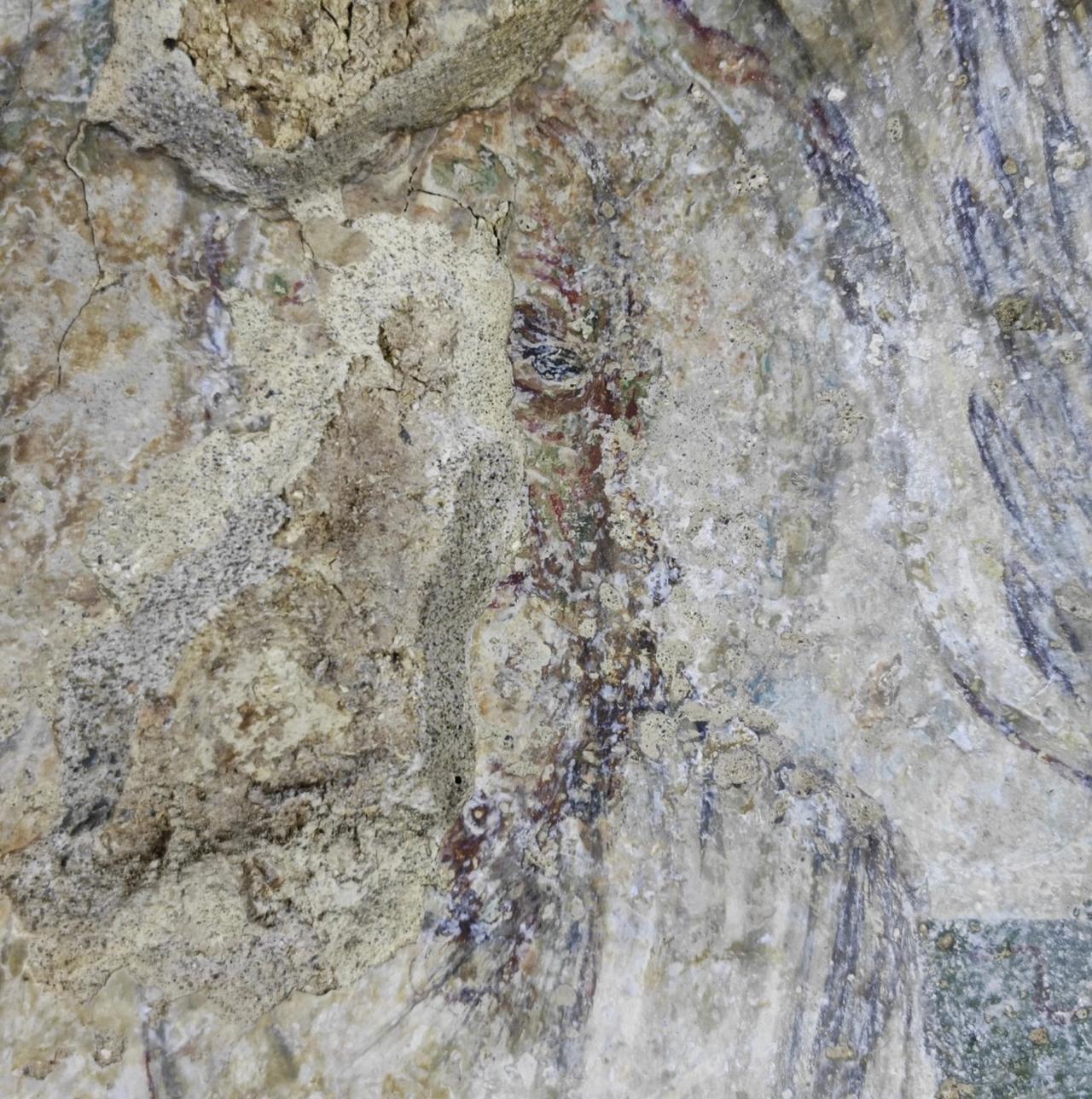
The cave takes its name from a circular baptismal basin and niche positioned on its eastern wall. According to Ergurer, nearly the entire interior is decorated with frescoes, or wall paintings, many of which remain in relatively good condition. These scenes feature Christian symbols, religious writings, plant motifs, and figures related to the cave’s ritual use.
On the outer surface of the baptismal niche, archaeologists observed a radiant cross framed with pearl motifs, flanked by garlands of leaves and flowers. Inside, partially damaged figures include what researchers believe to be the Virgin Mary.
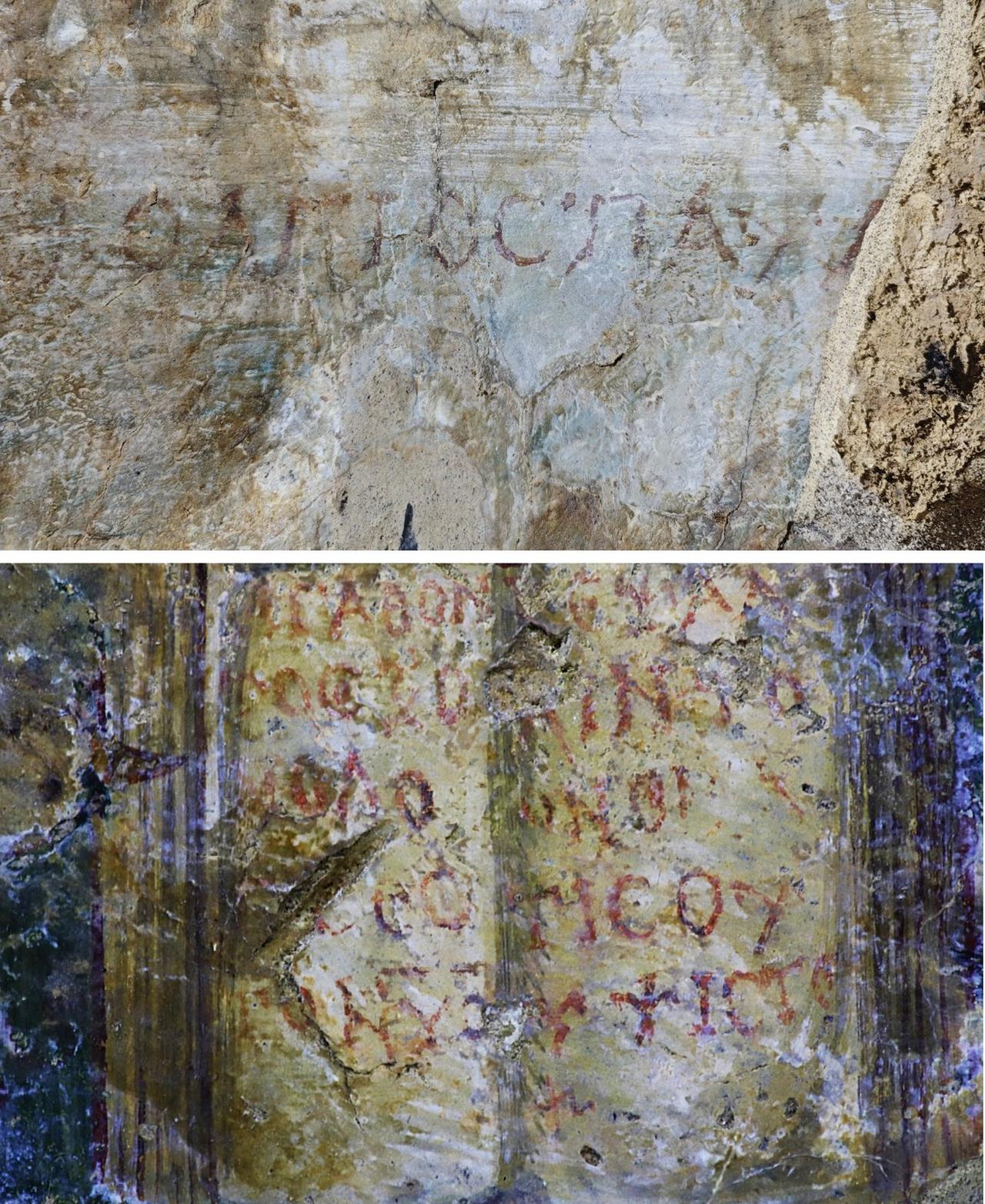
Another wall contains depictions of two additional figures: one is a woman with her face destroyed, while the other is a man holding a book inscribed with a verse from the Psalms: “It is good to give thanks to the Lord and to sing praises to your name, O Most High.” This inscription identifies the figure as Saint Paul, shown dressed in red and white garments. Above them, a darker-clothed figure seated on a throne is thought to represent prophet Jesus.
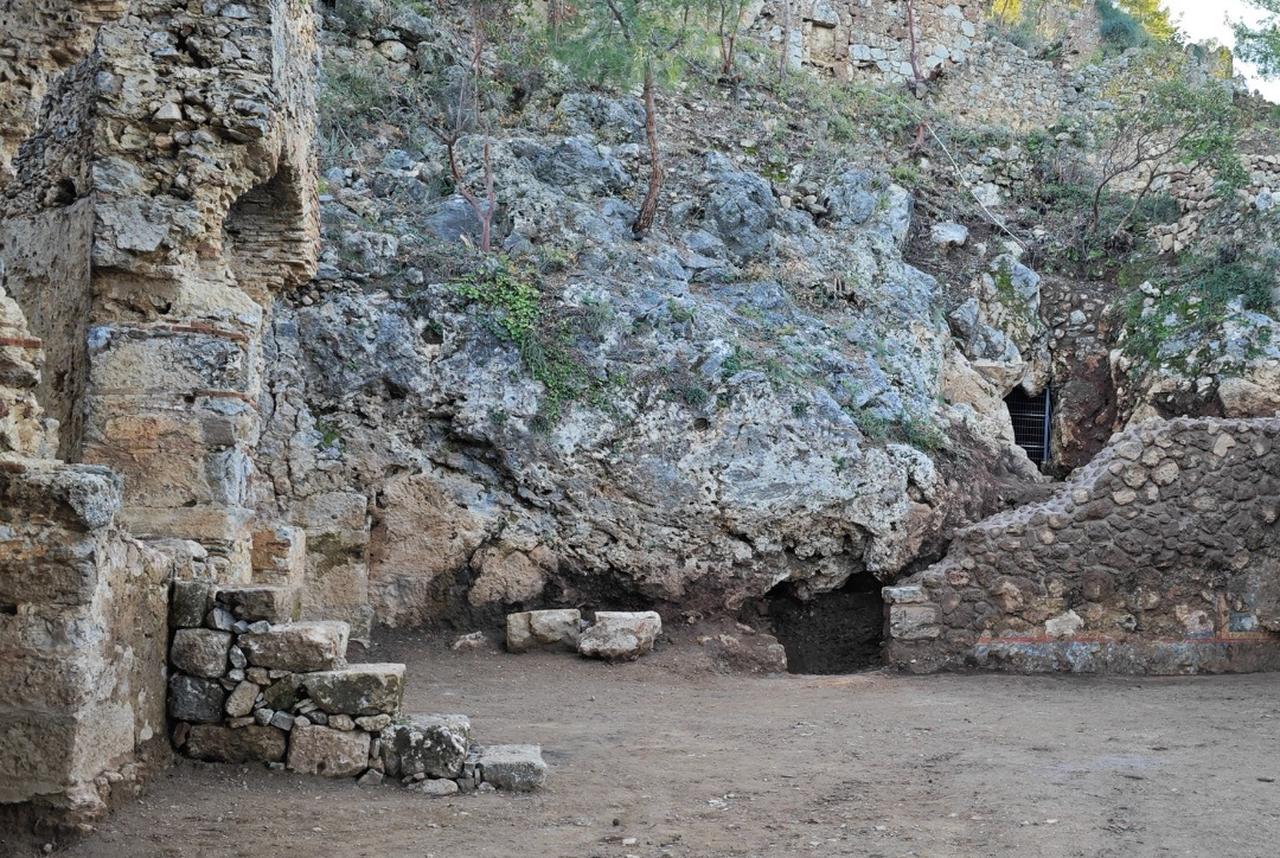
The excavation team continues to study the paintings in order to establish a more precise date for their creation. For now, the cave remains one of Syedra’s most important monuments reflecting the city’s Christian heritage.